With Silver Surfer, Weta continues its amazing run of effects projects. The company consistently delivers year in and year out. While they were sharing the work load on Fantastic Four: Rise of the Silver Surfer, as is the pattern these days, their current slate of production is nothing short of jaw dropping.
Weta was founded in 1993 by a group of young New Zealand filmmakers including Peter Jackson, Jamie Selkirk, Richard Taylor, and Tania Rodger to produce the digital special effects for Heavenly Creatures. Although impossible to imagine today, New Zealand had no reputation for visual effects when Weta started. As the company expanded with each project, Weta quickly required a large work place and settled in a community of studios on the Miramar Peninsula of Wellington, the capital city of New Zealand.
The Frighteners in 1996 was the first film that really got Weta on the major A list studio radar. This was followed by Contact in 1997 and then the new millennium and string of Oscar winning films. Between 2001 and 2005, Weta won 4 out of 5 of the Visual Effects Oscars – 2004 was the exception where they were still nominated for their work on I, Robot. Their credits during this period also included Van Helsing, XMen: The Last Stand, Eragon and Night at the Museum. Even the Walt Disney Pictures logo that premiered with Pirates of the Caribbean: Dead Man’s Chest was animated by Weta Digital.
From the early days as both a special and visual effects company Weta, split into specialised halves becoming Weta Digital Ltd (visual effects) and Weta Workshop Ltd (physical effects). The company’s slate of films continues to grow, having just completed Fantastic Four: Rise of the Silver Surfer (working along side Hydraulx). Weta also has in the pipeline:
– Avatar : Jim Cameron’s first major film since Titantic and a film set to become an instant sci-fi classic
– Dambusters
– 30 Days of Night
– The Water Horse
– Chronicles of Narnia: Prince Caspian, now being shot in Eastern Europe
– A three picture TinTin deal struck between Stephen Speilberg and director Peter Jackson.
Halo is no longer in active production though Weta was slated to create the visual effects for the film.
The vast battles required for The Lord of the Rings film trilogy led to the creation of MASSiVE, a program which allows the animation of huge numbers of agents: independent characters acting according to pre-set rules. MASSiVE was used by Weta in The Fellowship of the Ring, the Helm’s Deep battle sequence in The Two Towers, and the Battle of the Pelennor Fields in The Return of the King, but it has also been widely adopted around the world as the leading crowd generating software.
WETA’s lead actor digital character animation style — a combination of motion capture from actor Andy Serkis and key frame animation — that is Weta’s crowning glory. While ILM and SPI have also done great character work, Weta remains the premier facility to go to if the script calls for digital actors in lead and supporting roles. The tradition of Gollum and Kong is what led Cameron to take Avatar to Weta.
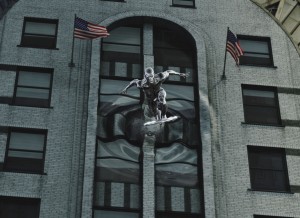
The team at Weta Digital, led by multiple Oscar winner Joe Letteri and Executive Producer Eileen Moran, have created and sustained a pipeline that achieves unbelievable realism. Letteri, VFX supervisor on Avatar, has managed to oversee building a subsurface scattering rendering technique pipeline that convincingly renders animated humanoid and animals in a feature films. James Cameron feels that “Weta has proven themselves a leader in visionary effects, especially in the area of performance capture based character animation, which is a big part of my new film.”
On Fantastic Four: The Rise of the Silver Surfer, Spectral Motion designed the Silver Surfer for Fox Studios. Weta took the design and created the digital version. In fact, in the film during the scenes where the Surfer has lost his cosmic powers, the tarnished silver surfer was an actor in a suit & makeup with some additional digital cleanup. Weta was responsible for the look of the digital Silver Surfer, along with the film CG replacement of the stand in actor and rendering of the final shots. Naturally, a high reflective character was always going to add some new and unusual problems, but not one Weta had not already faced – at least in part with I, Robot.
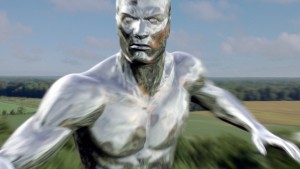
While an HDR image can be used for capturing a point reading of the reflective light at any point, the Silver Surfer’s character was nearly constantly in motion and sometimes such at such vast speeds Weta needed to creative moving stretched HDRs to generate enough ‘environment’ for the character to exist within. For a full discussion on this process listen to this week’s podcast interview with Eric Saindon, the VFX Supervisor for Weta on the film.
Doug Jones’ performance was motion captured as a stand in for the digital character. He was captured on set with a fast light weight rig was a first for Weta. The company has a long history of motion capture, but the on set tools used for this film were much simpler and faster than the company had ever used before on films such as the Lord of the Rings.
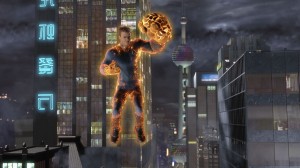
The Silver Surfer is based on the comic book character first seen first in 1966. The Surfer is born Norrin Radd, on the planet Zen-La, which came under threat by the world eating Galactus. Norrin agreed to lead Galactus around the galaxy – finding planets to be consumed. The character in the film is actually voiced by Laurence Fishburne.
One of the most unusual characters of the film that Weta worked on was Galactus, given that the director and the studio had a much less specific idea what Galactus would look like. In the podcast Saindon explained that initially Weta was told the character was to look like ” it is not solid but it has a solid structure under the atmosphere but you should never see the solid structure underneath” Weta’s solution used particle and sub surface scattering and “lots of procedural debris, atmosphere and movement in Galactus” explains Saindon. So complex were the final rendered shots that it took about four days to render them.
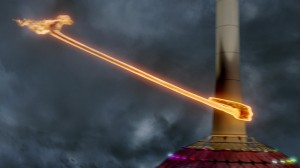
The team also worked on the Fire system of Maya fluid dynamics and distant sprite-like fire solution. Rendered in Renderman. The fire needed to match the first film as the director was very happy with the look achieved in the first film and so the team built on that look and then tried to extend it.
The story takes the characters to Shanghai, and the great Wall of China. Unlike other locations the production was only able to take stills on location, so for example the fight sequence in Shanghai needed a digital city build. The team did get to film in hong Kong, but to make the digital Shanghai the team used much of the same approached and technology that Weta had developed for New York in King Kong. The buildings where then destroyed using blast code as Doom and Johnny fight and of course wreak the city.
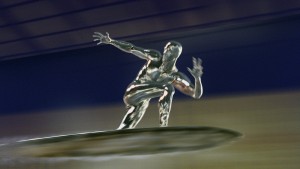 The film was primarily composited using Shake, but the company also uses Nuke. With a crew that moves up and down between 250 and 600 people, the limiting factor on Nuke that still dictates heavy Shake use is the ability to find trained freelancers are proficient with Nuke. With now an army of effects artists and of course their famous 4,400 processors renderfarm, the company is well placed to continue on with its roster of international and local film and commercial projects, and deliver vfx services worldwide.
The film was primarily composited using Shake, but the company also uses Nuke. With a crew that moves up and down between 250 and 600 people, the limiting factor on Nuke that still dictates heavy Shake use is the ability to find trained freelancers are proficient with Nuke. With now an army of effects artists and of course their famous 4,400 processors renderfarm, the company is well placed to continue on with its roster of international and local film and commercial projects, and deliver vfx services worldwide.
